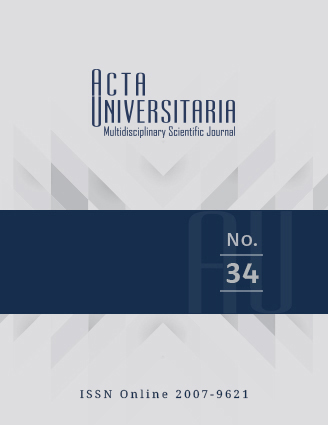Published 2024-06-19
How to Cite
Abstract
In Sinaloa, Mexico, rainfall is intense and can cause floodings in rural and urban areas. Although the risks cannot disappear entirely, deficient urban planning, poor drainage system, and accumulation of waste increase the vulnerability of the population, generating inequality derived from urban conditions. Through 160 surveys applied to dwellers in three of the most important cities of Sinaloa: Los Mochis, Mazatlán, and Culiacán, this work evaluates the losses suffered per household as a result of a flood incident. Losses of at least $70 256 Mexican pesos (3800 USD considering 18.00MXN/USD currency exchange in 09/06/23) per home were estimated, in addition to a significant devaluation of the properties. The study concludes that a socio-environmental justice approach should be adopted to ensure equal vulnerability reduction for all families, instead of the current approach of compensation and transfers which solves nothing in the long-term.
References
- Alberto, J. A. (2007). Vulnerabilidad ecológica: entre lo ambiental y lo social. El caso del área metropolitana del Gran Resistencia. En A. M. H. Foschiatti, (ed.), Aportes conceptuales y empíricos de la vulnerabilidad global (pp. 119-158). EUDENE.
- Bonasia, R., & Lucatello, S. (2019). Linking flood susceptibility mapping and governance in Mexico for flood mitigation: a participatory approach model. Atmosphere, 10(8), 424. http://dx.doi.org/10.3390/atmos10080424
- Cutter, S. L., & Finch, C. (2008). Temporal and spatial changes in social vulnerability to natural hazards. Environmental Sciences, 105(7), 2301-2306. https://doi.org/10.1073/pnas.0710375105
- Centro Nacional de Prevención de Desastres (Cenapred). (2019). Impacto socioeconómico de los principales desastres ocurridos en la república mexicana en 2018. https://www.cenapred.unam.mx/es/Publicaciones/archivos/409-RESUMENEJECUTIVOIMPACTO2018.PDF
- Foschiatti, A. M. H. (2004). Vulnerabilidad global y pobreza. Consideraciones conceptuales. Revista Geográfica Digital, 1(2), 1-20. https://ri.conicet.gov.ar/handle/11336/51214
- Granados, M. A. (2017). Vulnerabilidad social por género: riesgos potenciales ante el cambio climático en México. Letras Verdes, Revista Latinoamericana de Estudios Socioambientales, (22), 274-296. https://doi.org/10.17141/letrasverdes.22.2017.2720
- Huape, G. A., Padilla, L. L., Nieto, C. A., & Cortés, M. T. (2021). La vulnerabilidad socio-ambiental como pérdida de bienestar. Revista de Psicología de la Universidad Autónoma del Estado de México, 11(21), 71-92. https://revistapsicologia.uaemex.mx/article/view/17465
- Instituto Nacional de Estadística y Geografía (INEGI). (2020). Encuesta Nacional de Ingreso Gasto de los Hogares. https://www.inegi.org.mx/programas/enigh/nc/2020/
- Jordan, R., Rehner, J., & Samaniego, J. (2012). Megacities in Latin America: roles and challenges. In D. Heinrichs, K. Krellenberg, B. Hansjürgens & F. Martinez (eds.), Risk habitat megacity (pp. 19-35). Springer.
- Laurian, L. (2007). Deliberative planning through citizen advisory boards: five case studies from military and civilian environmental cleanups. Journal of Planning Education and Research, 26(4), 415–434. https://doi.org/10.1177/0739456X06298819
- Magaña, V. O. (2004). El cambio climático global: comprender el problema. En J. Martínez, & A. Fernández (comps.), Cambio climático: una visión desde México (pp. 17-27). INE-SEMARNAT.
- Margulis, S. (2016). Vulnerabilidad y adaptación de las ciudades de América Latina al cambio climático. CEPAL. http://hdl.handle.net/11362/41041.
- Mora, W. (2019). Cuestiones socioambientales y justicia socioambiental: diseño curricular y formación docente. Latin American Journal of Science Education, (6), 22006.
- Moreno, A. (2008). Justicia ambiental. Del concepto a la aplicación en planificación y análisis de políticas territoriales. Scripta Nova, 25.
- Pérez-Tamayo, B. N., Gil-Alonso, F., & Bayona-i-Carrasco, J. (2017). La segregación socioespacial en Culiacán, México (2000-2010): ¿De la ciudad dual a la ciudad fragmentada?. Estudios Demográficos y Urbanos, 32(3), 547-591. https://doi.org/10.24201/edu.v32i3.1660
- Pizarro, R. (2001). La vulnerabilidad social y sus desafíos. CEPAL.
- Ramírez, S. J., Galindo, M. G., & Contreras, C. (2015). Justicia ambiental: Entre la utopía y la realidad social. Culturales, 3(1), 225-250. http://www.scielo.org.mx/scielo.php?script=sci_arttext&pid=S1870-11912015000100008&lng=es&tlng=es
- Wenz, P. S. (1988). Environmental justice. State University of New York Press.
- Winchester, L. (2006). Desafíos para el desarrollo sostenible de las ciudades en América Latina y El Caribe. Revista EURE - Revista De Estudios Urbano Regionales, 30(96). https://doi.org/10.7764/1305

